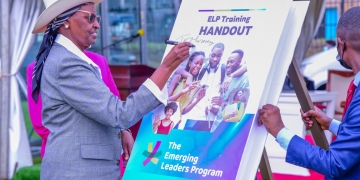
The Ministry of Health has issued guidelines on schools reopening. In a letter to the Education Minister and First Lady, Janet Museveni, the Minister has advised on Standard Operating Procedures, which must be adhered to by all schools, if they are to be opened.
The SOPs require hand washing, observance of a two-meter distance between learners, and routine screening of learners and staff at critical control points for signs and symptoms of leaners of COVID-19; are the cost drivers that should be adequately prepared for.
All education institutions were closed by Government on March 20, to avoid the spread of COVID-19.
The education sector, this year, was allocated only about sh3.6 trillion; and with the SOPs, this would mean that half the education ministry’s budget would be wiped out on an activity that was not initially planned for.
Unlike Kenya which resolved to go for the dead year, Uganda’s government, based on the proposals from the health and the plan education ministries; is still optimistic that the academic year can be salvaged.
It is not yet clear, if all these guidelines, will be implemented, as advised by the health ministry; owing to the cost implication.
Here is the full list of guidelines on schools reopening
- Maintain physical distance or social distance of at least two meters apart
- Each class should have a student leader for COVID-19 cases assessment
- Use of alcohol; based hand rubs in class
- Use of masks for all learners
- Each school is expected to recruit a health assistant (nurse)
- Teachers are required to enforce mandatory use of masks at education institutions
- Install handwashing equipment at all critical points
- Full time trained personnel assigned to do temperature screening
- A well-calibrated working temperature gun to be provided at each entrance
- Staff to complete and submit daily screening summary reports
- Leaners with above-normal temperatures are promptly isolated and the district task force to be immediately informed
- Isolation room for suspected learners to be provided
- A foot-operated and handwashing machine to be availed in each school
- Handwashing supplies to be provided at schools, at all times
- At least a five-liter liquid soap jerry can be availed
- All learners, staff, and visitors to keep a social distance of two meters between person during handwashing
- Display of Standard information and risk communication materials
- Assign staff to supervise break periods and stagger releasing students for breaks, lunch and going home time to limit interaction
- Supervise the handwashing session for learners
- Provide waste bins
- Restrict community access to education institutions
- All staff, learners to visitors to keep a social distance of 2 meters between person during handwashing
- Students and staff must sit at least 2 meters apart in the classroom
- Only 10 students can be respectively accommodated in a standard classroom for primary and secondary, and then 15 students for higher institutions of learning.
- Additional streams and new infrastructure requirements or modification may be required, to accommodate all students
- Where expansion of infrastructure is not feasible, the education ministry can go to shift system of education
- Additional teachers may be required to teach extra classes or adjust time tables to accommodate the number of increase of streams
- Ensure good ventilation equivalent to 1% of the total floor area
- Ensure the presence of windows equivalent to 10% of the total floor area
- Keep windows open
- At the end of the day, disinfect all toilets, door handles, window seals, tables, blackboards and other surfaces using a disinfectant
- Learning institutions should assign staff to assess for COVID-19 and keep records of all learners and staff
- Monitor all learners and staff for COVID-19 symptoms
- Verbally assess household of day scholars
- Avoid reactional and sports activities
- Space of two meters for beds
- Restrict entry into staff quarters
- No quieting on toilets and latrines
- Disinfect worktops every after 2 hours









Discussion about this post